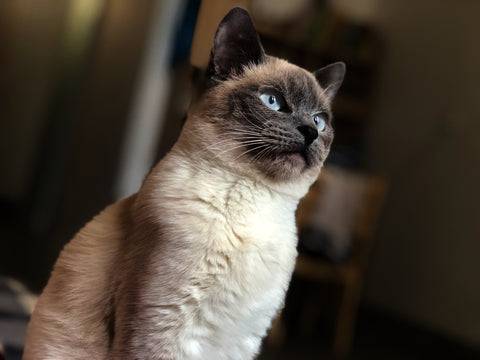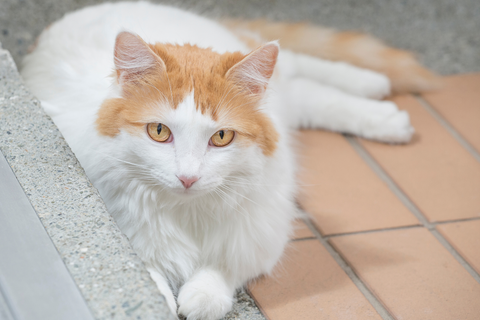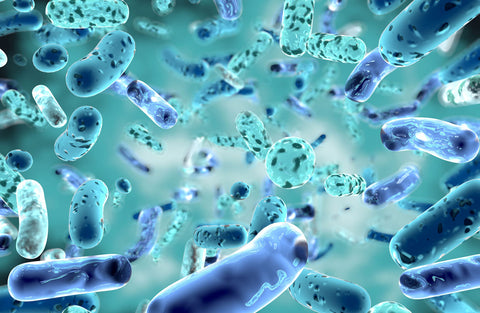
It's an exciting week for all of us here at Basepaws – we updated our breed database! With your help, we are inching closer and closer to making breakthroughs in feline genetics and improving the lives of our beloved kitties.
If you’re seeing some drastic changes in the results of your cat’s genetic report, here’s why –– since the last report update, our database has now grown to include:
- 2x more pedigree cats;
- many more new breeds in each breed group;
- more total samples in our database.

So what exactly does this mean for my cat?
With our cat genetic database growing more every day, now there is much more data to compare your cat’s genetics with. We have twice as many pedigree animal DNA, which means that we can match your cat’s DNA closer to what it can truly be.
The proportion of breed similarity in your cat’s report is calculated by comparing your cat’s DNA with the pedigree cats in our reference database. You can expect your report on how much of your cat’s genetics is shared with the reference cats to change as our database continues to grow.
Why are some breeds missing that dominated before?
With this latest update, we have increased the databases and added a lot more pedigree samples. We’ve also been able to better define some breeds based on this new data. This meant that we have more cats of each breed, the breeds are better defined and thus we can do a better job seeing which of the markers are similar to your cat. Simply said – we got better, and especially around breeds that are genetically similar, the similarities to your cat changed.
What do you mean by “Broadly Western”?
Your report is a comparison of how closely breed-specific regions of your cat’s DNA match with the pedigree cats in our database. For example, Koko is 63% similar to pedigree cats in the Western breed group, with the highest similarity to a Russian Blue (still only by 17.64%). We’ve added two extra categories of breeds, the Broadly Western and Broadly Exotic, to help us identify and categorize major differences in their DNA better.
I know that my cat is a Siamese. Why is his Siamese percentage so small?!
To date, we only have DNA from Thai Siamese in our database. The Siamese breed is a mystery genetically, and we are still working hard to understand this breed and share the results. We are continuously adding more pedigree cats to help you discover your cat’s most accurate genetic makeup so look for more updates on this breed coming soon.
You might find that your cat is more closely related to the Modern Siamese rather than the Thai Siamese breed based on the submissions we have received so far. Be on the lookout for more updates as we work to redefine the cat breeds of the world.
Did you send me the wrong report? It looks totally different!
Since our last breed update, we have been able to drastically increase the size of our pedigree database. This includes testing cats from a variety of different genetic lines of each breed to find a more and more accurate ‘genetic average’ of each breed. These newer, better samples have caused some the breed averages to shift and cause changes in our customer reports.
We are so excited to be able to continue to learn more every day and to be able to share that with you and the veterinary community. As we are able to add more samples and lines from around the world, we expect these accuracy changes to grow smaller and smaller, though we don’t have an expected date on exactly when yet. As an industry, feline genetics is still very young and we are excited to be leading the way into that mystery with you!
I thought this was a breed test?
Here at Basepaws our slogan is ‘Celebrate the mutts!’ –– our work is focused on bringing more knowledge and excitement to you as the proud owner of what we lovingly refer to as the domestic cat (but we know there’s so much more to them!). With the Basepaws DNA test, you can compare your own kitties with our highly sequenced pedigree cat database to see which markers they share. This comparison will help you give your cats the best care by better understanding their unique characteristics and any genetic predispositions to future health problems that they may have.

Do you know more about each chromosome and what specific alleles are where?
At Basepaws, we are using revolutionary technology to learn more about the cats in our lives. Using Next-Generation Sequencing technology to study the cat genome, we have built (and are continuing to expand) an extensive reference database of pedigree and domestic cats based on their DNA sequences. This new approach allows us to go beyond known alleles (pre-selected gene variants) and compare your cat’s DNA using breed and health-specific markers in our database while helping to discover new alleles or variations in their genes. This approach is much more sensitive and we can learn a great deal about our cats’ breed and health history than using traditional methods. You can learn more about it here.
On the breed chromosome map, why do some regions turn navy blue when I hover over breeds?
To create your cat’s unique chromosome painting, we use a mapping algorithm to identify regions in your cat’s DNA that are similar to those in our ever-growing database of breed-specific markers. First, we compare your cat’s DNA to our reference groups and then we check to see how similar they are to individual breeds within our database. When you hover over the chromosome painting, the navy blue/purple is showing regions of your cat’s DNA molecules that have matched the breed groups and individual breed sequences in our database. You can learn more about the mapping process here.




